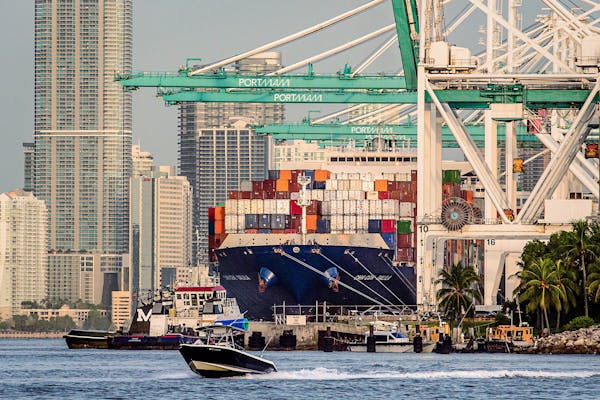The cars are back.
Or, at least, somewhat.
Twin Cities auto dealers report a moderate uptick in their sales lot inventories as car manufacturers pump out more automobiles than a year ago. That means buyers may have an easier time finding vehicles of their liking — though prices remain high.
"Our ability to get vehicles for customers is a little better, and that's good news for everyone," said Tom Leonard, president and owner of Fury Motors in St. Paul and vice chair of the Minnesota Automotive Dealers Association.
While most Minnesota dealers still won't have inventories beyond a 30-day supply for the next year, Leonard said, it's a much better situation than last year when new cars were hard to come by and people were selling used vehicles for more than their original purchase prices.
Unit production and inventories are up compared to the same period a year ago, according to industry reports.
At the end of the recent third quarter, nationwide inventory was up 44.3% compared to the start of the year, according to the National Automobile Dealers Association.
Fewer than 1 million vehicles were available across the U.S. at the start of 2022. By the end of September, 1.43 million units were on the ground and in transit — up nearly 13% from just the previous month.
This growth in inventory is due to higher vehicle production. For the recent third quarter, manufacturing output of all vehicles in North America totaled roughly 3.8 million units, a 24.9% increase compared to the same three-month period in 2021, according to the Alliance for Automotive Innovation.
According to the alliance — a Washington, D.C.-based advocacy group representing the manufacturers producing nearly 98% of new cars and light trucks sold in the U.S. — output has risen for two consecutive quarters.
That's a significant turnaround from the preceding three quarters that saw output decline due in large part to a global shortage of semiconductors, a key component in autos and computers.
Though the situation has improved incrementally, consumers still face high prices and a limited selection while the industry catches up on back orders.
Constrained supply has pushed prices higher. At the end of September, new-vehicle prices remained at record levels, with the average transaction price reaching $45,622 — a 6.3% increase from the same month a year ago and the fourth highest of any month on record.
Buyers seeking specific colors or premium packages should be prepared to wait as long as 60 days, Leonard said. "We're probably still a year away from the supply side getting to full tilt."
Used cars are still often selling for just as much as new cars, and new cars are still taking a while to reach dealerships or be delivered to doorsteps, said Andrew Guthmiller, founder and owner of Car Concierge, a Twin Cities business that guides shoppers through the car buying process.
People who have to buy immediately, he said, are oftentimes forced to settle for what's available, not for what they want.
If a client is able to travel to pick up a car out of state, they may have better luck, Guthmiller said.
"One of the ways to expedite getting a car is to not stay local," he said. "As much as it would be nice to buy a car in Minneapolis, sometimes we can expedite it and find a price that's justifiable by getting out of the Minneapolis area and into Iowa or Colorado."
Among Guthmiller's clients, buyers shopping for a particular car have generally already researched the cost and are prepared for the expense. Overpaying for added services at the dealership or aftermarket accessories, however, is what buyers want to avoid.
Those added costs can range from $300 to $7,000, Guthmiller said.
"The most important thing is people need to be patient and take their time, more so than ever," Guthmiller said. "If you rush and buy at first opportunity, it's costing you a lot of money to do it that way."
Ned Zimmerman-Bence was suddenly forced to decide whether to buy a new car after somebody crashed into his family's Volvo while it was parked outside their St. Paul home a few weeks ago. Fortunately, he and his wife own another vehicle, a Toyota.
His wife usually drives the Toyota, so Zimmerman-Bence has been using ride-sharing services. As an entrepreneur, his work schedule is flexible. And, as empty-nesters, he and his wife no longer need a second vehicle to shuttle their kids to school or activities.
With prices at record highs and supply low, Zimmerman-Bence isn't sure the expense is worth it.
"Why bother paying for a new car and insurance?" he said. "The cost isn't a huge barrier, but the car just sits idle for 80% of the time. Why pay $35,000 for something that's going to sit around and depreciate over time?"
If he were to buy a second car, Zimmmerman-Bence would choose an electric vehicle for the lower emissions. But, he said, he's not looking forward to the process of buying a car, which he describes as unpleasant and time-consuming. He's also wary of potential costs for maintenance and repairs.
For the foreseeable future, he'll likely continue using ride-share options, he said.

